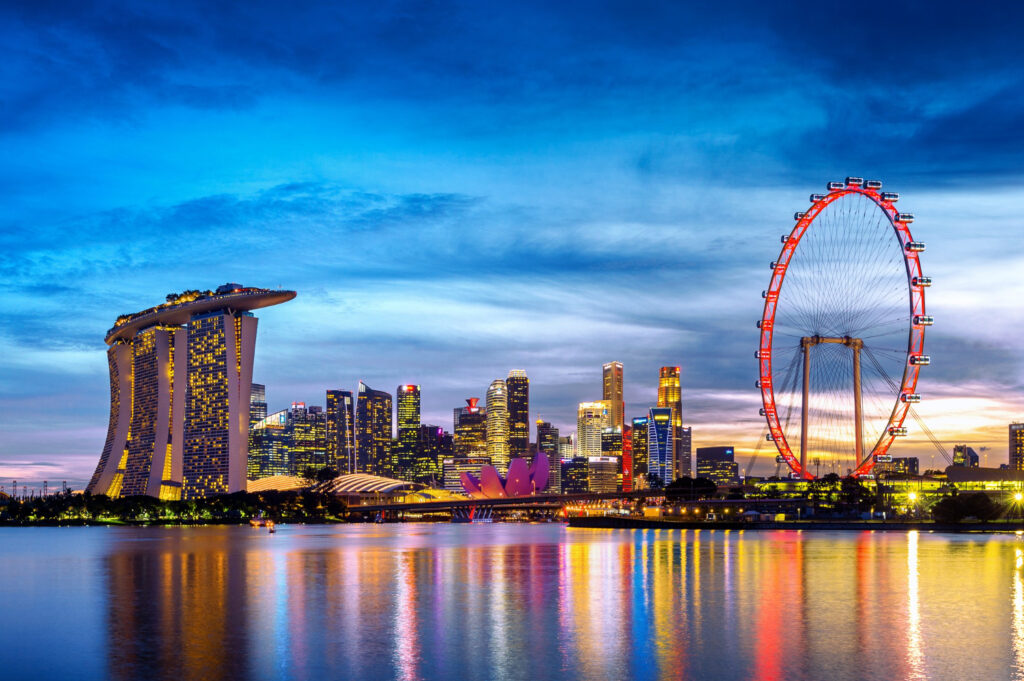The Singapore property market has always been resilient, but with 2025 off to a cautious start, many property home buyers are wondering whether they should wait for prices to fall or act now.
This guide explores what history says about downturns, what’s happening in today’s market, and whether a price correction is likely. If you’re watching the Singapore property price chart, questioning the property market value, and calculating your next move, this blog is for you.
Looking Back: When Have Prices Dropped in the Past?
Over the decades, Singapore property prices have seen only a handful of real downturns. But when they occurred, they were tied to external shocks or major government intervention, not random fluctuations.
1. The CPF Oversupply Crisis of the 1980s
The government’s decision to allow CPF savings for property purchases triggered a buying spree. Developers ramped up construction, leading to oversupply. With a global recession and weakened local demand, Singapore house prices fell from 1981 to 1986, marking one of the longest slumps.
2. Asian Financial Crisis and Policy Shocks (1996–1998)
In 1996, the government introduced the first major cooling measures, including LTV caps and other restrictions. Add in the 1997 Asian Financial Crisis, and the property house prices tumbled, dropping over 30% before stabilizing in 2000.
3. The Early 2000s: Tech Crash and SARS
From the dot-com bust to 9/11 and the SARS outbreak, uncertainty dominated the early 2000s. While the real estate property value took a hit, it rebounded by 2005, proving that slumps don’t last forever when fundamentals are strong.
4. Global Financial Crisis (2008–2009)
One of the shortest downturns. While the financial world panicked, Singapore home buyers saw opportunity. The market dipped for just five quarters before roaring back by 2010, driven by local demand and strong public confidence.
5. COVID-19: Fast Disruption, Faster Recovery
The 2020–2021 pandemic disrupted viewings and slowed sales, but it also sparked a buying wave. Singapore property market activity picked up rapidly by mid-2021. Limited supply and low interest rates pushed Singapore property prices to new highs.
What Can Buyers Learn From Past Cycles?
A look at the Singapore property price chart reveals an important pattern: dips are often short-lived, and rebounds are quick.
1. Shorter Slumps, Faster Recoveries
From 20 quarters in the 1980s to just 1–2 quarters during COVID-19, downturns have become less severe. This is thanks to stricter lending rules, policy buffers, and a better-informed buyer base.
2. Confidence, Not Price, Holds Buyers Back
In every downturn, buyers hesitated, not because homes were unaffordable, but because of fear. Ironically, the best opportunities came when confidence was low and uncertainty was high.
3. Trying to Time the Market Rarely Works
If you’re waiting for a steep correction in Singapore property prices, the window may close before you act. Most buyers only jump in after prices rebound, which defeats the purpose.
The Current State of the Market in 2025
We’re now seeing signs of moderation but not distress.
- Q1 2025: The Property Price Index rose only 0.6%, down from 2.3% in the previous quarter.
- Resale and new launch volumes are tapering.
- Vacancy rates are inching up, but remain healthy.
This points to a cooling, not a collapse, in the property market value.
Three Key Trends Shaping 2025
1. Slowing Growth, Not Falling Prices
Yes, the property news in Singapore shows a slowdown. But don’t confuse slower growth with falling values.
- Resale flats are stabilizing.
- Developers are holding prices steady rather than slashing.
- New launches remain firm, especially in core or fringe areas.
2. Affordability Stress
Rising Singapore house prices are clashing with slower income growth. In the OCR and RCR, some buyers are hitting borrowing limits, especially with new launches pricing aggressively.
The result? More interest in:
- 3-room HDB flats
- 3-Room BTO flat
- Resale opportunities in mature estates
Buyers are getting more pragmatic, especially when construction times for BTO flats are falling. This is also leading many prospective buyers to revisit their mortgage planning, especially given the shift in home loan rates in Singapore. While rates are still relatively manageable, small differences can have a long-term impact on monthly affordability. Being proactive in comparing rates and locking in favourable terms has become just as important as negotiating the property price itself.
3. Global Trade Uncertainty
The 2025 U.S. tariffs and global slowdown are adding pressure. While foreign investor sentiment has softened, Singapore home buyers still dominate the market. This helps anchor values even in a volatile external environment.
Why This Isn’t Like Past Downturns
The Singapore property market of today is built differently.
- Real demand from owner-occupiers outweighs speculation.
- Cooling measures (like TDSR and ABSD) act as a pressure valve.
- Lenders are cautious, reducing default risk.
Buyers are more financially prepared and long-term focused. Unlike past cycles, people are buying to live, not to flip.
Can We Expect a Major Price Drop?
Unlikely. Here’s why:
- Supply is tight: Between 2025 and 2027, completions are far below the 10-year average.
- Demand is sticky: Upgraders, families, and HDB dwellers reaching MOP are still buying.
- No mass panic selling: Most owners have locked-in low interest rates and are not distressed sellers.
Even if there is a correction, history suggests it will be mild and short.
What Buyers Should Do in 2025?
If you’re planning a purchase this year, don’t let headlines drive your decisions.
1. Know Your Numbers
Before you act, understand how to calculate stamp duty in Singapore, including ABSD and legal fees. It’ll help you budget smarter.
2. Review Resale Opportunities
The HDB resale flat buyers’ guide may be more relevant than ever. Many are re-evaluating the value of:
- 3-room resale flat in Tampines.
- Flats with good HDB resale valuation.
- Older units in great locations with modern upgrades.
Sometimes, resale beats new launches in terms of value and liveability.
3. Look at BTO as a Long Game
With the BTO advantage making a comeback, especially through SWT projects, the construction times for BTO flats are shrinking. Waiting 2.5–3 years for a new flat with grants and no COV could beat a resale at peak price.
At the same time, it’s worth factoring in home loan rates in Singapore as part of your long-term planning. Locking in a stable rate today, whether through a fixed or hybrid package, can help protect your monthly cash flow and reduce financial stress during the construction or key collection phase. Even for BTO buyers, getting mortgage-ready early makes a big difference.
Final Thoughts
In summary, major crashes in the Singapore property market are rare. So while Singapore property prices may cool, they’re unlikely to collapse. That’s why, whether you’re considering upgrading from an HDB, investing in a resale unit, or simply monitoring the property market value, it’s more important to focus on your own readiness than wait for a mythical “perfect time.”
If you’re financially ready and find a home that ticks the boxes, don’t wait for a perfect market. The next rebound could already be forming, just like it has every time before.














